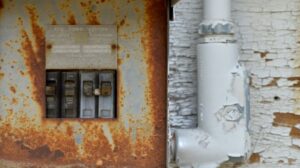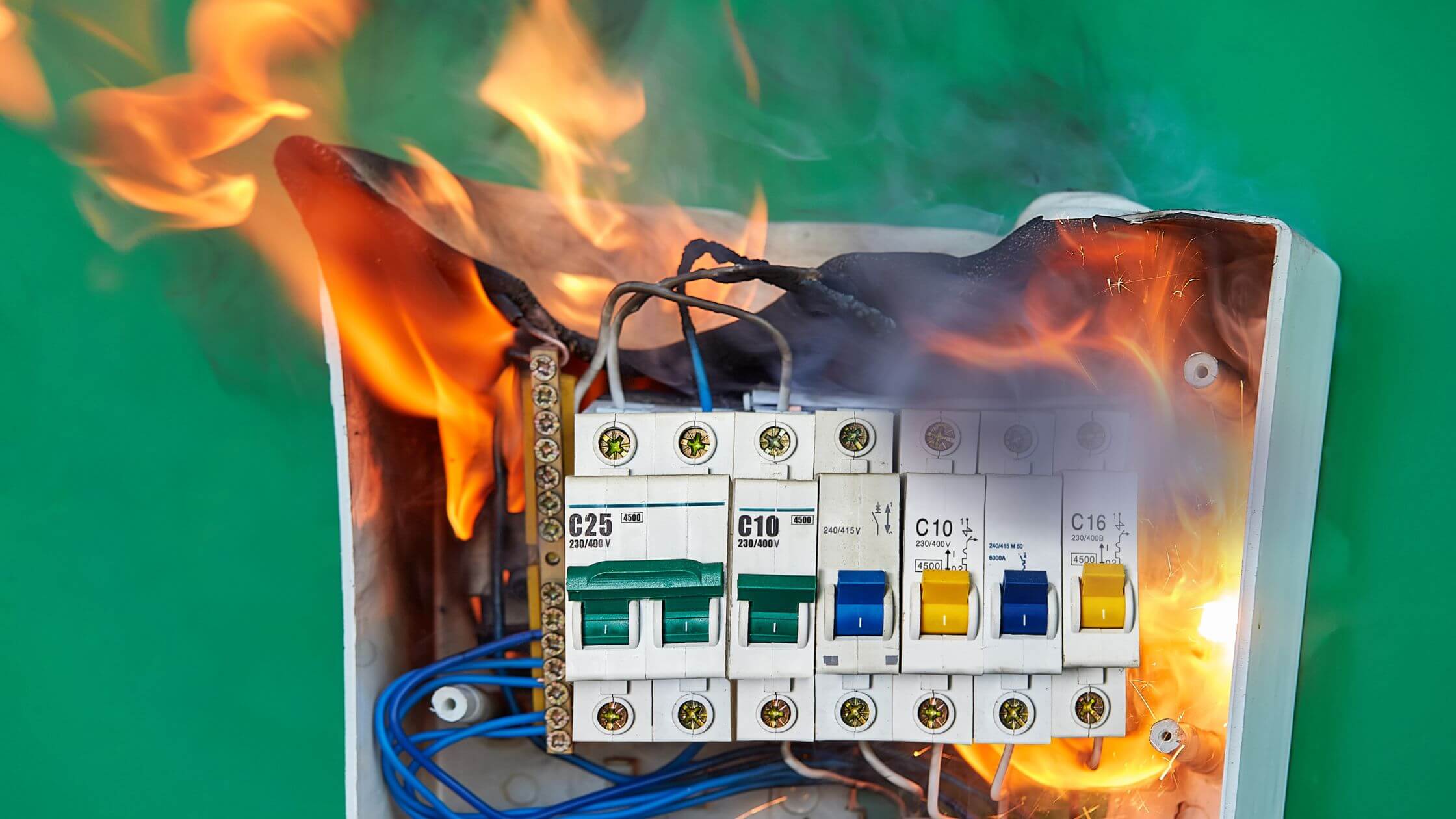 There are about 46,700 electrical fires per year, according to a study by the National Fire Protection Association (NFPA) which has found that faulty electrical work is the second most common cause of residential fires. So are you at risk? And what can you do to protect yourself and your family from a house fire that is caused by electrical issues?
There are about 46,700 electrical fires per year, according to a study by the National Fire Protection Association (NFPA) which has found that faulty electrical work is the second most common cause of residential fires. So are you at risk? And what can you do to protect yourself and your family from a house fire that is caused by electrical issues?
What are the causes of electrical house fires?
According to data research published in 2022, from 2015 to 2019, fire departments received an average of 46,700 calls each year for home fires caused by electrical failures or malfunctions. These fires resulted in an average of 390 deaths and 1,330 injuries annually, as well as an estimated $1.5 billion in property damage. Electrical failures or malfunctions were the second leading cause of home fires, representing 13% of all home structure fires in this period. During the cold months of November to February, 30% of these fires occurred. The primary heat source for 63% of these fires was electrical arcing.
Here are some more statistics:
- Electrical fires in residential buildings most frequently happened in one- and two-family homes (83%).
- Electrical fires in residential buildings were more frequent during the winter months of January (12%) because of increased usage of lighting and heating equipment.
- Electrical fires in residential buildings most frequently began in bedrooms (15%), unoccupied crawl spaces, or attics (13%).
- Although the majority of electrical fires begin in the bedroom, the living room, family room, and den see the greatest number of fatalities.
- Electrical wire, cable insulation, and structural members or framing were the top three individual elements that started electrical fires in residential buildings, accounting for 31%, 18%, and 18% respectively.
To better understand and prevent electrical house fires, it is crucial to examine the various factors that contribute to these incidents and to be aware of the warning signs that indicate a potential electrical fire. However, if prevention measures fail and a fire does occur, homeowners can choose to sell a fire-damaged house especially if the extent of the damage is substantial, making repairs costly and time-consuming. Let’s take a closer look at it.
Learn More: Everything You Need To Know About Electrical House Fires
Electrical house fires occur frequently in older homes
In the United States, about one-third of houses are older than 50 years. Statistics show that electrical fires are more likely to occur in older dwellings.
Outdated electrical systems designed in many older homes are the major reason they may be more dangerous. Aging, faulty installations, modifications, and the lack of modern safety features, coupled with high electricity consumption in today’s homes, heighten the risk of electrical fires.
Types of wiring
Familiarizing yourself with the types of wiring can help you determine whether your property is more vulnerable. There are three main types, and which one you have likely depends on the age of your house:
- Electrical systems with grounds: Electrical systems in houses constructed from the 1940s to the present will be grounded. In the event of a short circuit, grounding is a crucial safety component that is intended to lessen the possibility of shock or electrocution. A cold water pipe or a metal grounding rod directly connects grounding wires to the earth. Any additional power, in the event of a short circuit or overload, will travel along the grounding wire to the earth.
- Aluminum wire: In the 1960s and 1970s, aluminum wiring spread as the cost of copper skyrocketed. There is a higher risk of fire because many switches and receptacles from that era were not made to work with aluminum wire.
- Knob & tube wiring: Knob and tube wiring, which was first used in residences constructed between the 1800s and the 1930s, is an open-air system that uses ceramic knobs to keep wires away from a combustible structure. These suspended wires were routed into ceramic tubes to avoid coming into contact with the wood structure and igniting a fire. Because knob and tube wiring is not grounded and is more susceptible to damage from outdated and improper modifications, it poses a fire risk.
Most common causes of electrical fires
Electrical fires frequently stem from several key factors. Faulty wiring and overloaded circuits top the list, often found in older homes not equipped for modern electrical demands. Misuse of extension cords, such as using them as a permanent solution or overloading them, further exacerbates the risk. Appliances with frayed wires or damaged cables pose a significant hazard by potentially igniting nearby combustible materials. Lastly, inadequate or outdated electrical systems, lacking the safeguards of contemporary designs, significantly contribute to the occurrence of electrical fires.
Here are the leading electrical malfunctions or failures causing fire incidents and the proactive measures to mitigate these risks, safeguarding homes and lives.
Faulty appliances and outlets
Faulty electrical outlets and outdated appliances primarily cause electrical fires. Similarly, issues with electrical switches, receptacles, and appliance cords frequently lead to fires. Always avoid using appliances with frayed or damaged cables, as they can transfer heat to combustible materials such as floors, drapes, and rugs, sparking a fire.
Cords under rugs
Running cords under rugs poses another risk for electrical fires. Moreover, removing a cord’s grounding plug to fit it into a two-prong electrical outlet can also initiate a fire. Appliances include an extra prong to ensure they are only used in outlets capable of handling the additional electricity they require.
Lamps and light fixtures
The use of lamps and light bulbs is another frequent cause of electrical fires. The main culprit is installing a high-wattage bulb that is too strong for the lamp or light fixture. Always be sure to check the maximum bulb wattage and do not go over it. Putting items like paper or cloth over a lampshade can also cause a fire.
Extension cords
Another reason for electrical fires is the improper use of extension cords. You must plug appliances directly into an outlet and never leave them hooked to an extension cord. Use extension cords only as a short-term solution. Hire an electrician to install new outlets if you don’t have the right kind for your appliances.
Space heaters
Space heaters are the fifth most common electrical fire cause. Due to their portability, people often place portable heaters too close to flammable items like curtains, beds, clothing, and furniture.
Bad wiring
Electrical fires often result from outdated wiring. The increased number of electrical devices in the typical home today, which can include everything from computers to TVs to gaming systems to AC units to microwaves and much more, may overload the wiring in a home that is over 20 years old.
What may be the signs that my house is at risk of an electrical fire?
If you observe (or detect) any of the following warning signs, it is possible that your residence is at risk of an electrical fire and it is advisable to take immediate action to prevent it from occurring. However, if a fire does occur and causes extensive damage, it may make more financial sense to sell a fire-damaged house rather than invest in costly repairs.
Some of the signs may be as follows:
- Frequently tripping circuit breaker: If your circuit breaker frequently trips, it likely indicates an electrical overload or a short circuit in your appliances or wiring, requiring an electrician’s attention.
- Persistent burning odor: A burning odor without a visible source may indicate a short circuit in your home’s wiring, possibly from a broken connection or outdated wiring.
- Burned or discolored outlets and switches: Discolored or burned outlets and switches may be a sign of loose connections or defective wiring that is leading to arcing and sparking, which can cause a small fire.
- Worn-out wiring: If the wiring in your home is over 50 years old, it may be time to upgrade to prevent the risk of electrical fires.
If you have suffered an electrical or any other type of fire, We Buy Fire Damaged Houses may be able to help. We offer a cash purchase for homes in as-is condition, allowing you to avoid a lengthy repair process. Fill out the form at the bottom of the page to get started.
Photo by Greg Bulla on Unsplash

